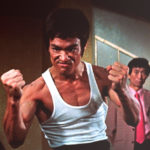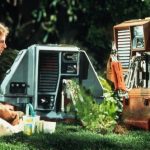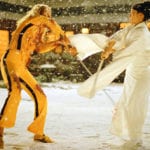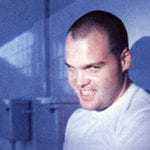 Movies and TV
Movies and TV  Movies and TV
Movies and TV  Creepy
Creepy 10 Lesser-Known Shapeshifter Legends from Around the World
 Animals
Animals 10 Amazing Animal Tales from the Ancient World
 Gaming
Gaming 10 Game Characters Everyone Hated Playing
 Books
Books 10 Famous Writers Who Were Hypocritical
 Humans
Humans 10 of the World’s Toughest Puzzles Solved in Record Time
 Mysteries
Mysteries 10 Scientific Mysteries We Don’t Fully Understand
 Weird Stuff
Weird Stuff 10 Celebrities Who Have Admitted to Alien Encounters
 Our World
Our World 10 Surprising Secrets of Notre Dame Cathedral
 Miscellaneous
Miscellaneous 10 Intriguing Origins of Popular Carnival Rides
 Movies and TV
Movies and TV 10 Actors Dragged out of Retirement for One Key Role
 Creepy
Creepy 10 Lesser-Known Shapeshifter Legends from Around the World
 Animals
Animals 10 Amazing Animal Tales from the Ancient World
Who's Behind Listverse?

Jamie Frater
Head Editor
Jamie founded Listverse due to an insatiable desire to share fascinating, obscure, and bizarre facts. He has been a guest speaker on numerous national radio and television stations and is a five time published author.
More About Us Gaming
Gaming 10 Game Characters Everyone Hated Playing
 Books
Books 10 Famous Writers Who Were Hypocritical
 Humans
Humans 10 of the World’s Toughest Puzzles Solved in Record Time
 Mysteries
Mysteries 10 Scientific Mysteries We Don’t Fully Understand
 Weird Stuff
Weird Stuff 10 Celebrities Who Have Admitted to Alien Encounters
 Our World
Our World 10 Surprising Secrets of Notre Dame Cathedral
 Miscellaneous
Miscellaneous 10 Intriguing Origins of Popular Carnival Rides
10 Mind-Blowing Special Effects behind Iconic Movie Scenes
The world of cinema takes us to places we’ve never been, tells stories we could only imagine, and invokes emotions that stay with us long after the credits roll. It’s the magic of moviemaking that captivates our senses. A significant part of this enchantment comes from the special effects. Let’s delve into ten mind-blowing special effects behind iconic movie scenes that have left audiences on the edge of their seats.
Related: 10 Movie Motorcycle Stunts That Are Impossible in Real Life
10 Terminator 2: Judgment Day: Shape Changing Terminator
Remember the first time you watched the awe-inspiring transformation of the T-1000 in Terminator 2: Judgment Day? It’s hard to believe that this film was released in 1991 because its CGI still holds up today. The scene where the liquid metal Terminator changes shape is a remarkable example of early CGI.
What’s incredible is that this technology paved the way for the modern-day computer-generated effects we often take for granted. The seamless transition from the T-1000 walking through metal bars to reforming into its human disguise was groundbreaking.
At that time, CGI was in its infancy, and director James Cameron took a bold step by relying heavily on this emerging technology. The result was a jaw-dropping visual sequence that set the bar for what was possible with computer-generated imagery, thereby shaping the future of movie special effects.
9 Titanic: Ship Cracking & Sinking
While Titanic is often remembered for its love story, it was also a cinematic masterpiece when it came to special effects. The scene that has gripped our hearts for over two decades is the tragic sinking of the ship. A combination of CGI and practical effects made it seem like we were there, witnessing the ship’s heart-wrenching descent into the ocean’s depths.
The sheer scale of this endeavor is nothing short of mind-boggling. Director James Cameron went to great lengths to recreate the doomed liner. A massive ship replica was constructed just for the sinking sequences. The result was a cinematic marvel that conveyed the chaos and devastation of the ship’s sinking in a way that had never been seen on screen.
The combination of practical effects and CGI allowed the audience to feel the ship’s tremendous weight as it cracked and broke apart, sending shivers down our spines. The sinking of the Titanic remains an iconic moment in cinema history, showcasing the power of special effects to evoke deep emotions in the audience.
8 Independence Day: White House Explosion
“Welcome to Earth!” These famous words from Will Smith in Independence Day still resonate with fans, but it’s not just the memorable line that keeps us hooked. The practical effects in the movie, particularly the iconic explosion of the White House, are nothing short of spectacular. The scene has etched itself into the collective memory of moviegoers everywhere.
In the film, the White House is obliterated by an alien spaceship. To achieve this spectacular destruction, the filmmakers employed a combination of practical effects and clever camera work. A 1/12th scale model of the White House was constructed. This detailed model allowed for a controlled explosion that sent flames and debris soaring into the sky. The result was a jaw-dropping visual that remains a part of cinematic history.
The explosion of the White House in Independence Day showcased the power of practical effects. The sequence was a masterclass in precision, timing, and craftsmanship. It demonstrated how combining real-world elements and a touch of movie magic could create unforgettable cinematic moments.
7 Pan’s Labyrinth: Faun and Pale Man Prosthetics
Pan’s Labyrinth is a dark, mesmerizing fairy tale, and a big part of its allure lies in the practical effects used to bring its mystical creatures to life. The Faun and the Pale Man are characters that continue to haunt our dreams. Rather than relying on CGI, director Guillermo del Toro chose to go practical. The decision to use practical effects for these characters was a testament to del Toro’s commitment to creating a tangible, immersive world.
Doug Jones, the actor behind both creatures, underwent hours of prosthetic application and makeup to transform into the Faun and the Pale Man. The results were nothing short of astonishing. The intricate detailing and artistry that went into creating these characters elevated the film to a new level of visual storytelling.
The Faun and the Pale Man became iconic figures in fantasy cinema. Their presence on screen was not only captivating but also genuinely unsettling. The fact that these characters were brought to life through practical effects rather than computer-generated imagery added an extra layer of authenticity to the film.
6 Inception: Hallway Dream Scene
Inception took us on a mind-bending journey through the dream world, and the rotating hallway scene was a standout moment. Instead of relying on computer-generated trickery, director Christopher Nolan and his team built a massive, functional rotating set to create the disorienting effects of shifting gravity.
The result was a sequence that left audiences breathless. The combination of practical effects, incredible stunts, and top-notch cinematography turned this scene into an unforgettable piece of cinema. As Joseph Gordon-Levitt navigated the rotating hallway, engaging in a gravity-defying battle, viewers were transported into the dream world.
The practicality of the set added a level of realism often missing in CGI-heavy sequences. It allowed the audience to feel the disorientation and intensity of the situation, immersing us in the action.
5 Who Framed Roger Rabbit: Blending Animation and Live Action
Who Framed Roger Rabbit is a classic example of cinematic innovation. This groundbreaking film seamlessly blended animation and live action in a way that had never been done before. The interaction between the animated characters and the real world was so well-executed that it left audiences believing that Toon Town was a genuine place.
The techniques used to achieve this feat were nothing short of revolutionary. Motion control cameras, which could precisely replicate camera movements, matched the live-action footage with the animated characters. This technology allowed for the seamless integration of characters like Roger Rabbit and Jessica Rabbit into the real world.
The hand-drawn animation was another critical element of the film’s success. It wasn’t just about placing animated characters into live-action scenes. It was about making them interact with the environment and the human characters convincingly. The attention to detail in the lighting, shadows, and perspective was remarkable.
Who Framed Roger Rabbit demonstrated that the boundaries of what was possible in filmmaking could be pushed further than anyone had imagined. The film’s ability to make us believe in the existence of animated characters in the real world was nothing short of magical.
4 Star Wars Episode IV: A New Hope: The Trench Run
A long time ago, in a galaxy far, far away, George Lucas introduced us to the epic world of Star Wars. The trench run in the original film is one of the most iconic sequences in cinematic history. What makes it even more extraordinary is the practical effects used to create the X-wing fighters, the Death Star, and the fiery explosions.
In an age before the widespread use of CGI, the filmmakers had to rely on practical effects and miniature models to bring the Battle of Yavin to life. The attention to detail in crafting the miniature X-wing fighters and the Death Star was astonishing. The models were placed in a darkened studio, and the camera work, along with pyrotechnics, brought the epic space battle to life.
The trench run scene remains an awe-inspiring example of how practical effects can stand the test of time. The filmmakers’ dedication to creating a realistic and visually stunning sequence without the aid of CGI was a remarkable achievement.
3 Lord of the Rings: Backgrounds & Forced Perspective Hobbit Height
The Lord of the Rings trilogy took us on an epic journey through Middle-earth, and the special effects played a pivotal role in bringing this fantastical world to life. One of the most striking aspects of the films was the combination of CGI backgrounds and practical forced perspective techniques. These elements helped create the illusion of hobbits looking smaller than they actually were and the vast landscapes appearing even more majestic.
The breathtaking landscapes of New Zealand served as the backdrop for Middle-earth. These real-world locations were seamlessly integrated with computer-generated backgrounds. The CGI environments allowed for the creation of sweeping vistas, towering mountains, and vast battlefields. It transported the audience to a realm of fantasy that felt as real as our own.
Practical effects played a crucial role in making the hobbits appear smaller than their human counterparts. The filmmakers used forced perspective, a technique where actors were positioned at different distances from the camera to create the illusion of varying sizes. This clever use of practical effects added depth and dimension to the films, making the hobbits’ journey through Middle-earth all the more captivating.
The combination of CGI and practical effects in the Lord of the Rings trilogy showcased the power of blending technology with traditional filmmaking techniques. It created a world that felt authentic and immersive, allowing us to believe in the existence of hobbits, Elves, and Orcs in a way that had never been seen before on screen.
2 Scanners: Head Explosion
Sometimes, it’s not the landscapes or epic battles that make special effects memorable. It’s the shock factor. David Cronenberg’s Scanners is a cult classic known for its visceral and gruesome effects. The most infamous scene is undoubtedly the head explosion.
The head explosion scene is a shocking and unforgettable moment in cinema history. It’s a testament to the power of practical effects in creating scenes that leave a lasting impact on the audience. The use of latex, gelatin, and explosives to achieve this gruesome effect was a testament to the creativity and innovation of the filmmakers.
1 Mission Impossible: Ghost Protocol: Climbing Building
When it comes to iconic movie scenes, Tom Cruise’s death-defying climb up the Burj Khalifa in Mission Impossible: Ghost Protocol takes the top spot. What’s truly mind-blowing is that Cruise himself performed this daring stunt. He scaled the world’s tallest building without CGI or green screens, and the result was a breathtaking sequence that left us gripping the edge of our seats.
The Burj Khalifa, standing at a staggering 2,722 feet (830 meters), is an architectural marvel. It’s a testament to human engineering and innovation. Tom Cruise’s decision to climb it for a movie scene reflects the lengths actors and filmmakers are willing to go to create truly unforgettable moments.
The practicality of the stunt added an extra layer of tension and excitement. We knew that what we saw on screen was real, and that knowledge amplified the sense of danger and exhilaration.








